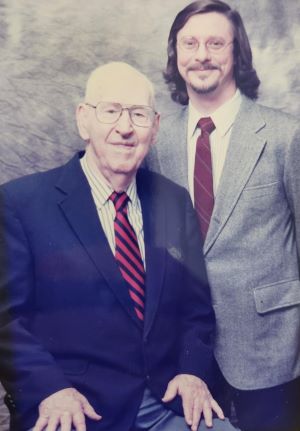General Introduction and History
/https://siu.edu/search-results.php
Last Updated: Aug 22, 2024, 03:24 PM
A Brief History of the Library of Living Philosophers
The Library of Living Philosophers began as an idea, but over the decades, it has grown into and indispensable institution in the world’s intellectual life and history. As the figures who were featured and their contributors have passed into history, the importance of the LLP’s project has become increasingly clear.

Paul Schilpp’s original idea had to do with avoiding pointless and endless controversy over questions that could be settled through dialogue, in its time and carried out by the primary figures. What became clear within a few years is that the LLP became a forum for the most serious discussions, many of them quite controversial, but presented in a form that all participants knew would be seen as the final word. From the “half-hearted naturalism debate between Dewey and Santayana, to the final chapter of the Rorty-Putnam debate, published some years after Rorty’s death, the LLP houses the permanent records of the most pressing debates of the age.
Yet, the “age” has changed, several times, in the history of the LLP. The world stood on the verge of the Second World War when the series began, but could not have imagined the devastation. The Atomic Age, the Space Age, the end of the Cold War, the Information Age, and now a post-pandemic world in which Artificial Intelligence is revolutionizing our lives –all of this is forecast, discussed, reflected upon, and evaluated in the pages of the LLP. Some have said that being chosen as the principal figure for an LLP volume is the closest thing to a Nobel Prize that exists for philosophers, and indeed, there are some Nobel laureates among our principal figures, and even more nominees. But philosophy is a longitudinal affair. Historical distance tells the tale, but not in one or two generations. It takes longer.
That fact about philosophy makes the work of the LLP quite challenging. Grasping today what will be important in a hundred or three hundred years is no easy task. The Editor, the Advisory Board, the publishers, and Southern Illinois University cooperate in trying to achieve what Karl Jaspers called “a decisive consciousness of the present.” It requires a thorough knowledge of history, both the course of events and the way that human thought contributes to the making of history. Jaspers believed that such a command of the past gives us a clear sense of where we stand in the present, and, as he says, the present is encompassed by the future.
It is for the sake of the future that LLP does its work. We maintain the highest standards of historical editing, priding ourselves on thoroughness, accuracy, and readability. Every reference is checked in our volumes, and it is common for contributions to go through many drafts and revisions. Simultaneously we aim to capture the characteristic style of expression of the principal figures, and we intend the volumes to be an exhaustive evaluation of the causes, both natural and moral, of the excellence of that figure. We record in contributions and criticism the full range of the life and thought of our principal figures. Our volumes become the most important reference material for the figures we have chosen.